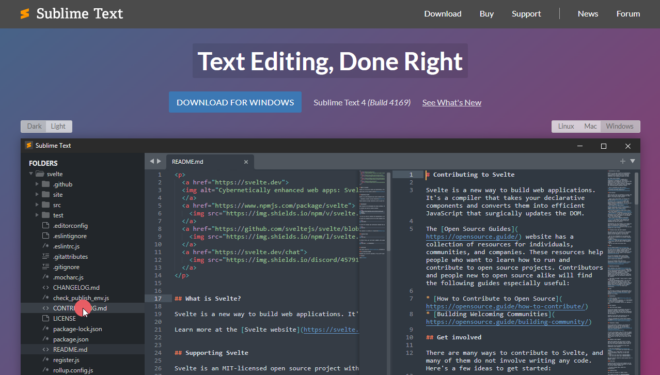From ensuring that our smartphones operate efficiently to creating the software that runs large enterprise systems, developers are the brains behind much of the technological advancements we’re seeing today. However, software development is neither quick nor easy. And neither does it come cheap.
In fact, it takes around 4.5 months for the average software development project to be completed at an average cost of $36,000. With demand for such projects at an all-time high, developers need to get into a flow and experience deep focus to be productive.
That’s why using the right tools and techniques to enhance coding efficiency are so crucial. And that’s exactly what we explore in more detail below. Let’s dive in.
Understanding Developer Productivity
Developer productivity can be understood by exploring some of the objectives and key results (OKRs) against which their work is measured. Some of these are time-to-completion, bug rate, and code coverage.
Despite working toward clear OKRs, achieving these goals is sometimes hindered by common challenges that developers face that hinder their productivity. Examples of these include:
- Interruptions and meetings
- Micro-management and tight deadlines
- Vagueness and unclear prioritization
- A distracting workplace environment
- Uncontrolled changes in the project’s scope
- Unclear product definition process
- Tool multiplicity and hardware
- Lack of documentation
Techniques and Strategies for Boosting Developer Productivity
Software team leaders and project managers who are aiming to boost productivity of their developer teams should consider the following strategies:
- Minimizing distractions and multitasking: When developers write code, they are in a space of deep focus. The smallest distractions could lead to drops in productivity and have other negative effects. The same is true when you require your developers to multitask. Whether it’s attending to incessant phone calls or unplanned stand-ups, it’s necessary to create a positive space where they can thrive. Give them sufficient time to prepare for planned meetings in advance, ensure they are working in a quiet environment, and avoid micro-managing them to avoid frustration and poor productivity. You can also use task apps to organize tasks by priority and set time limits so your developers don’t have to waste time and attention preparing their to-do list.
- Optimizing the Integrated Development Environment (IDE): There are software apps that help developers operate more productively. Essentially, this is known as an IDE and it combines functionalities that include software editing automation, building, testing, and packaging. IDEs can improve coding efficiency through additional capabilities syntax highlighting, intelligent code completion, refactoring support, debugging, etc.
- Clear project specifications: The importance of well-defined project specs in reducing misunderstandings cannot be stressed enough. Project team leads should introduce well-defined project deadlines with achievable milestones along the way. There should also be verification by the client or interested party of the expectations of deliverables that the project should produce upon completion. Other key criteria include having a clear budget, setting out quality assurance requirements, and software requirement specifications (SRS), including functional requirements, non-functional requirements, and technical requirements.
- Eliminating unneeded tests: While testing may be a natural part of the software development process in ensuring conformity with business requirements and technical specifications, it shouldn’t go overboard. Instead, there should be processes in place that review and aim to optimize the testing activities. Ultimately, this can reduce the execution time for the final product.
- Utilizing No-Code Platforms: In recent years, the rise of no-code platforms has offered developers a new approach to streamline development processes. These platforms allow for the creation of software applications without the need for traditional programming, enabling developers to focus on higher-level tasks while still achieving efficient results. Integrating such platforms into development workflows can significantly boost productivity by accelerating the development cycle and reducing the need for manual coding tasks.
Developer Productivity Tools
While there may be many developer time tracking and productivity tools available, we’ve curated the top two to help you with different development tasks. Here are the tools that topped our list:
Sublime Text

Developed by Jon Skinner, Sublime Text is a versatile text editor for code, markup, and documentation. It is incredibly fast in launching and can handle large files with ease. Available for Windows, macOS, and Linux, its cross-platform compatibility means switching between different operating systems is a breeze and no functionalities are lost.
For those developers who would like to customize their coding environment, its functionality can be extended using community-contributed packages. Meanwhile, there are plugins that can be used, too. With a minimalist and clean interface, it offers a clutter-free environment for distraction-free writing.
What is more, it offers the ability to make multiple selections and edits at the same time. It offers a command palette to help you access numerous functions quickly. And for more complex projects, you can split your code into numerous columns or rows for easy comparison and editing. Finally, it can be configured to automatically save your files regularly.
GitHub

While there are distinct advantages and disadvantages of cloud computing, using GitHub is all about the benefits. This is a website and cloud-based service that helps developers boost their productivity. Think of it as a massive file where multiple developer collaborators can work on a project, store code, and implement version control to manage changes to their code.
It’s all about improving developer productivity and taking it to the next level seamlessly. What is more, it has a user-friendly interface, making it easy for novice and experienced developers to share, merge, change, and write code in one place.
Conclusion
With the techniques and tools mentioned above, project managers can ensure greater developer productivity without compromising the mental health of their team members.
Many developers experience burnout and this needs to be prevented with proper collaboration and communication, supported by the right tools.
Enhancing developer productivity in coding can be a more streamlined process as managers take their wellbeing into account.

